The exhibit shows a data center side serial clustering deployment. In this organization, not every remote site has a Steelhead appliance deployed, and all remote locations will be connecting to the data center.
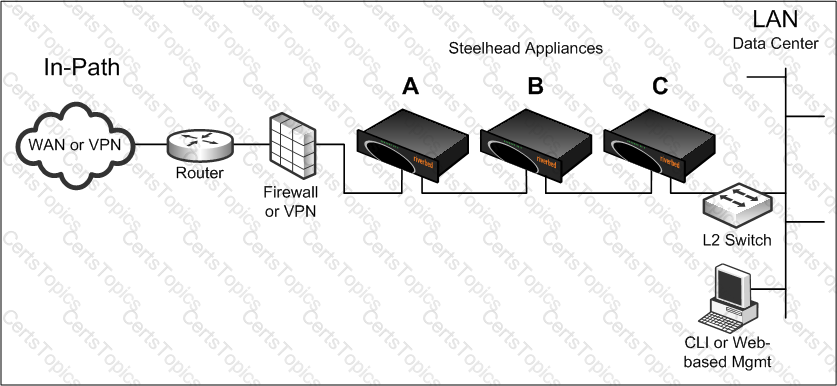
For connections initiated from the data center, there is a possibility that the Steelhead appliances shown in the exhibit will end up peering with each other, rather than the intended remote Steelhead appliances. Where are peering rules needed to prevent this problem?
Refer to the exhibit.
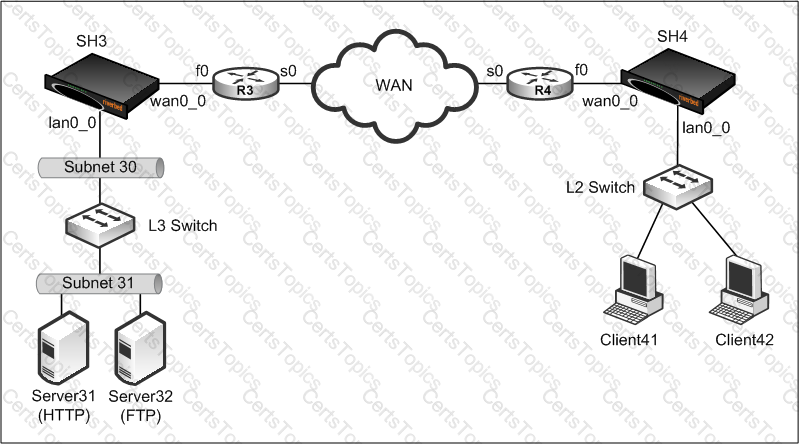
In the accompanying exhibit, SH3 and SH4 are able to optimize FTP and HTTP sessions between Client41 and the respective application hosts Server31 and Server32. However, optimization does not happen for Client42 and these application hosts. A quick check on SH3 and SH4 registers neither optimized nor pass-through traffic from Client42. Client42 is able to ping Client41 and the in-path address of SH4. Note that SH3 and SH4 are in auto-discovery mode. What is the likely cause?
In a recent in-path deployment, users are complaining that some of their CIFS drive-mapping connections do not appear to be optimized. Upon further analysis, you discover the file shares reside on a domain controller. The Steelhead appliances are deployed in a default configuration. Which of the following is the most likely cause of the problem?
Refer to the exhibit.
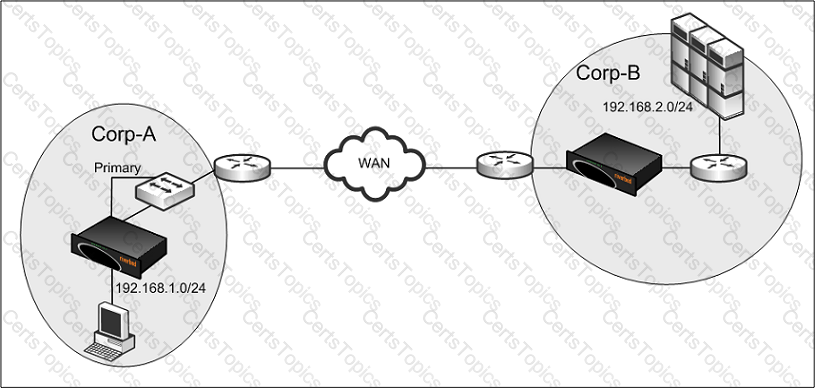
You configured CIFS prepopulation at Corp-A but it is not working. What is likely the cause of the issue?
Which of the following are examples of Networking policies on the CMC appliance? (Select 3)
What command should you use to see the direct URL of a package?
Refer to the exhibit.
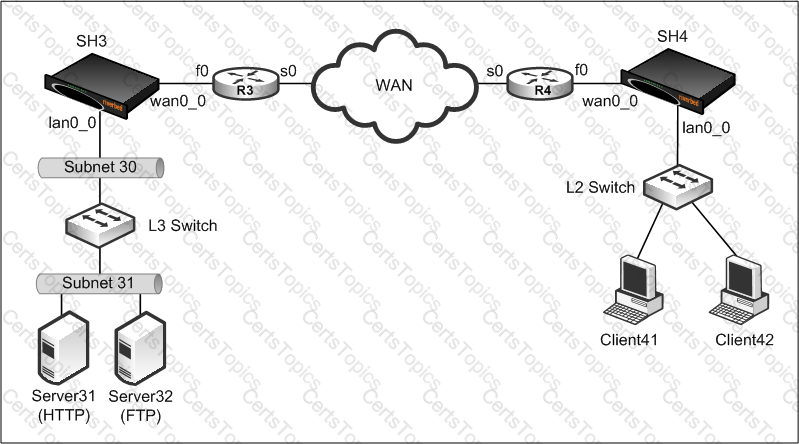
SH3 and SH4 are able to optimize FTP and HTTP sessions between Client41 and the respective application hosts Server31 and Server32. However, optimization seems to be a problem for Client42 and these application hosts. A quick check on SH3 and SH4 registers neither optimized nor pass-through traffic from Client42. Client42 is able to ping to both Server31 and Server32. Note that SH3 and SH4 are in auto-discovery mode. What is the likely cause?
What is visible on the CMC appliance home page dashboard? (Select 4)
Which of the following is true about fetching Steelhead appliance's configurations from a CMC appliance?
Which of the following is true regarding the CMC appliance?
Which two of the following attributes are required to be added to a TACACS+ server to enable monitor and admin logon access to the CMC appliance via TACACS: (Select 2)
When troubleshooting a datastore wrapping alarm with 1 day wrapping notification configured, which of the following should be examined? (Select 2)
Refer to the exhibit.
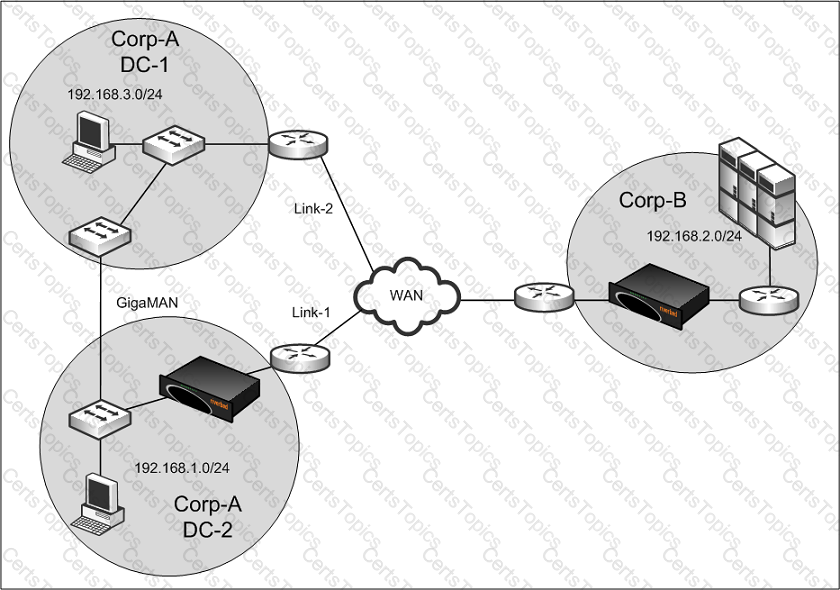
Traffic going from Corp-A-DC-2 towards Corp-B will always use Link-1. Traffic from Corp-B back to Corp-A-DC-1 may traverse Corp-A-DC-1, over the GigaMAN before it reaches Corp-A-DC-2. No TCP connections are initiated from Corp-B to either Corp-A-DC-1 or Corp-A-DC-2. Unfortunately, the customer does not have any money to purchase any additional Steelheads. What are some possible fixes to ensure optimization occurs while Link-1 is operational? (If Link-1 ceases to function, optimization is not possible.) (Select 2)
Refer to the exhibit.

A customer is reporting that the first connection from a user to the server is failing. However, subsequent connections work properly and are optimized. How can this problem best be resolved?
You need to take a full packet trace from the WAN interface of a Steelhead appliance to send into technical support. Which of the following commands will achieve this assuming typical Ethernet MTU? (Select 2)
What information is available in the System Snapshot files on the Steelhead Mobile Controller?
It is not recommended to use the same Steelhead appliance to optimize both replication traffic and general user traffic because:
The Group ID (GID) links which two policies? (Select 2)
The client-side Steelhead appliance has been configured for OOB Destination Transparency, what should the source IP/port be for the OOB connection?
Which of the following is Endpoint alarm?
The Steelhead Mobile client on your laptop is showing a status of “Firewalled”. What is the problem?
Two Steelhead appliances deployed in-path at different offices cannot auto-discover each other. What technique can be used to “force” the two Steelhead appliances to optimize traffic between each other?
A firewall at a remote site on the WAN side of Steelhead appliance (A) is stripping out the 76 and 78 values in the TCP options field. Steelhead appliance (B) is in the local cluster of appliances communicating with an Interceptor appliance. The desired result is for optimization to continue between Steelhead appliance (A) and Steelhead appliance (B) for all traffic originating from the remote site. A suggestion is made to use fixed target rule(s) to meet this objective. Based on the information provided select the best answer from the choices below:
What information does the OVA package include about the Virtual Steelhead appliance? (Select 4)
When upgrading a Virtual Steelhead appliance, what steps can be taken to preserve the existing datastore?
What is the default In-path rule on an Interceptor appliance?
For a new connection, a Load Balancing rule matches but none of the target Steelhead appliances in the rule are available. What will happen to the new connection?
A data center location has three Steelhead appliances and one Interceptor appliance clustered together. If Steelheads A and B are unable to handle the new web traffic on port 80, the administrator does not want the connection to be serviced by Steelhead C. Given the current rules, we want to prevent traffic from redirecting to Steelhead C.
Current Rules:
Rule 1: Redirect rule for ports 445, 139, 80, target SH A
Rule 2: Redirect rule for ports 8080, 80, target SH B
Auto (default rule)
Which rule should be added on the Interceptor to achieve desired functionality?
What deployment type supports fail-to-wire?
A customer with no Steelhead appliances currently deployed wants to test Steelhead Mobile on a client that connects to corporate through a VPN over the Internet. The customer has the requirement that there be no network disruptions during the initial testing phase. Which of the following would work?
After installing a Steelhead appliance at a remote site, users started complaining about some optimized applications being slower. After some initial investigating, you discovered a backup job was consuming most of the bandwidth causing congestion. You also found that QoS is configured on the router and should have prevented this but it did not. What is the most likely cause?
SteelHead SaaS can provide telemetry. What kind of integration with SteelCentral is possible? (Choose two.)
What type of problem does the error message below indicate:
Sep 13 03:50:51 SH alarmd[18371]: [alarmd.NOTICE]: Alarm 'admission_mem' triggering
Sep 13 03:50:51 SH alarmd[18371]: [alarmd.NOTICE]: Alarm 'admission_control' triggering
Sep 13 03:50:51 SH alarmd[18371]: [alarmd.NOTICE]: Alarm 'health' severity changed to 'Admission Control'
A SteelHead blocks all traffic when the appliance is powered off. What reasons could cause this behavior? (Choose two.)
-- Exhibit –
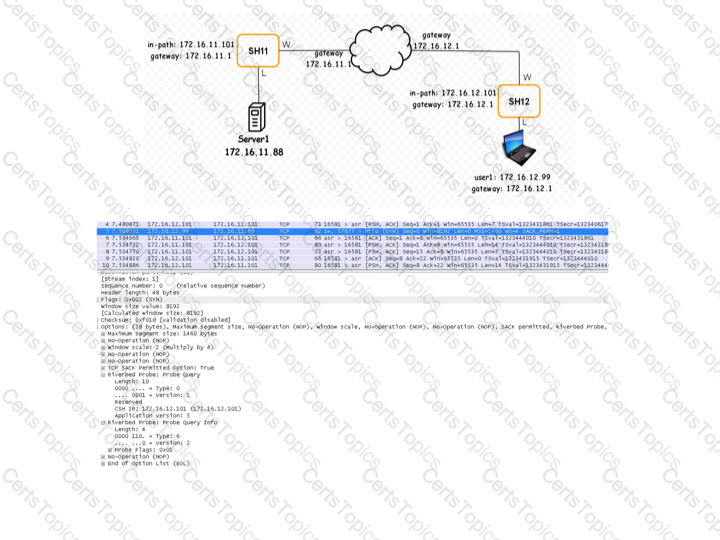
-- Exhibit --
Refer to the exhibit. According to the packet capture, what statements are true? (Select 2)
What type of problem does the error message below indicate:
Sep 7 22:53:50 SH pm[18184]: [pm.NOTICE]: Output from sport:
/opt/rbt/bin/sport (pid 27529) received signal 12 (SIGUSR2) marking bit
Branch office users live streaming video URL fragment requests are not optimized even though Microsoft Silverlight stream splitting is enabled. What could be the causing this? (Select 3)
The SteelHead REST API connectivity can be used for which of the following?
Which is the default value for latency-based location awareness in a SteelHead Mobile policy?
-- Exhibit –
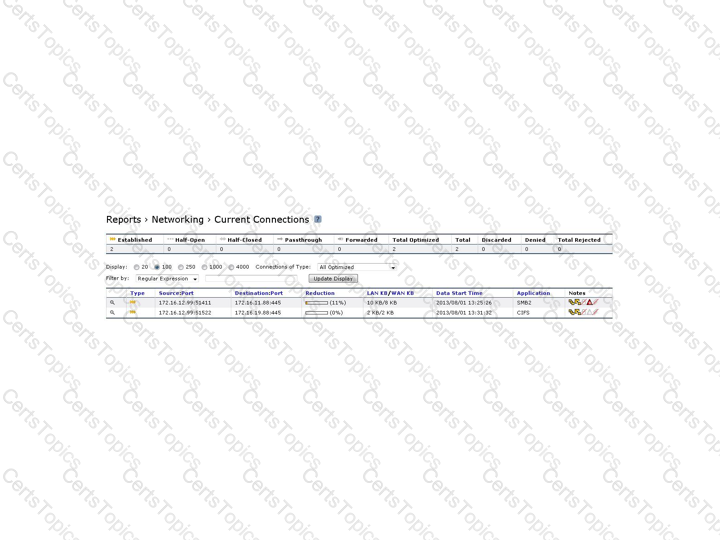
-- Exhibit --
Refer to the exhibit. When USER1 tried to map shares to Server 1 and Server 2, he got the results shown. What does the report represent? (Select 2)
Examine the diagram below. The customer needs to optimize data center servers and also servers within the DMZ but wants to keep the SteelHead behind the firewall. Which optimization mode would support this environment?

On Steelheads, by default tcpdump:
MAPI optimization configuration should be applied.
The picture below corresponds to a connection using the SteelHead SaaS GeoDNS feature. What is the IP address of the closest Microsoft Exchange Client Access Server (CAS)?
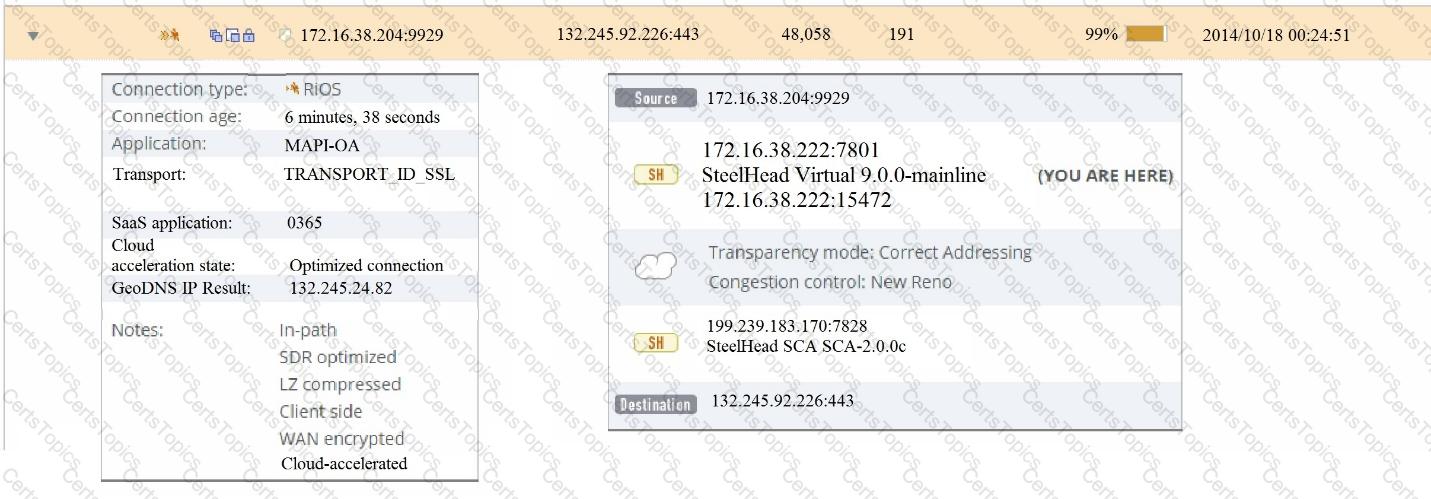
A SteelHead is deployed on an 802.1Q trunk in the diagram below. A connection is being optimized from a client on VLAN 20 using Correct Addressing.
Which VLAN ID will be on the inner channel connection?
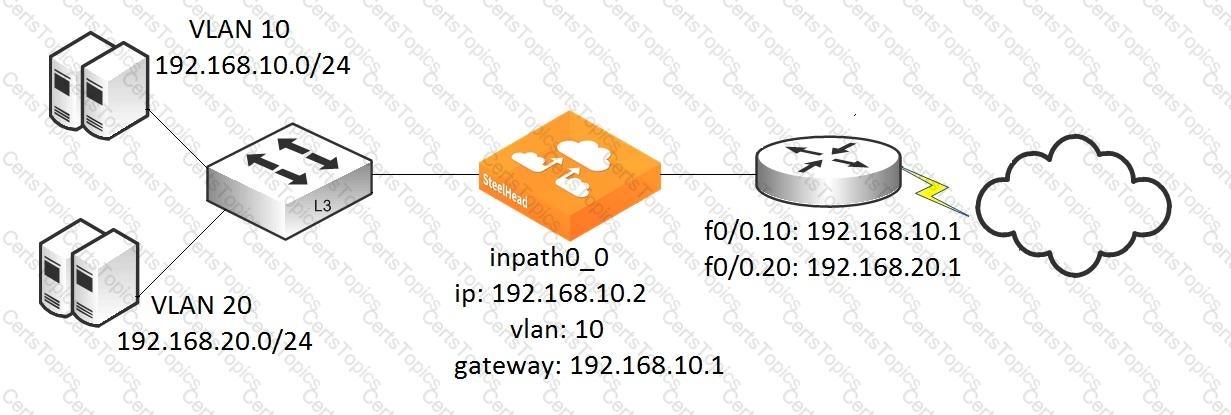
A server-side logical in-path deployment is shown in the exhibit. Additionally, SH12 is configured with a fixed-target rule pointing to SH11. The client behind SH12 will not be able to establish a connection to SERVER1 as a logical loop will occur when the number of optimized connections in SH11 has reached the maximum system limit.
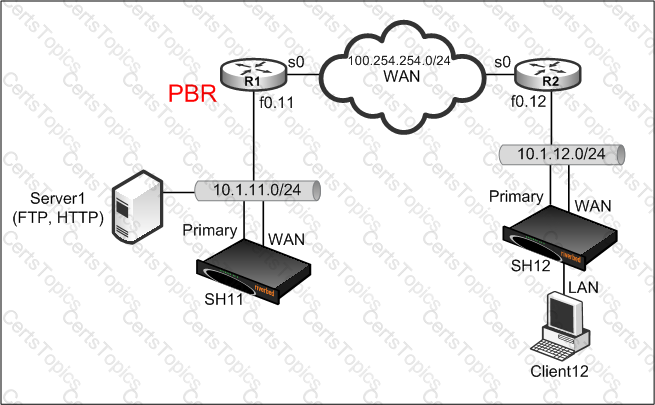
What is the best way to resolve this issue?
WCCP uses bits to create and distribute buckets. Using HASH assignment, what are the maximum number of bits used?
In an implementation using a 4-port card, which interface could be used as the Connection Forwarding neighbor? (Select 2)
What is the supported redirection scheme/s used when a Steelhead appliance is in a WCCP deployment?
When using Correct Addressing and enhanced auto-discovery (EAD), what is the size of the probe response in the return SYN/ACK packet from the server?
Which of the following interfaces should be used for datastore synchronization? (Select 2)
Which of the following statements are true about server-side out-of-path deployments? (Select 4)
Place the following commands to upgrade a Steelhead appliance from the CLI in the correct order. (NotE. include only the necessary steps)
1) SH (config) image install image.img 2
2) SH (config) image fetch
3) SH (config) boot system 2
4) SH (config) restart clean
5) SH (config) reload
6) SH (config) write memory
A customer wants to mark the IP precedence value for a passive FTP data connection as flash (flash = CS3). Which of the following are true? (Hint: Use the calculator)
Connection pooling feature on RiOS pre-establishes:
In the exhibit,
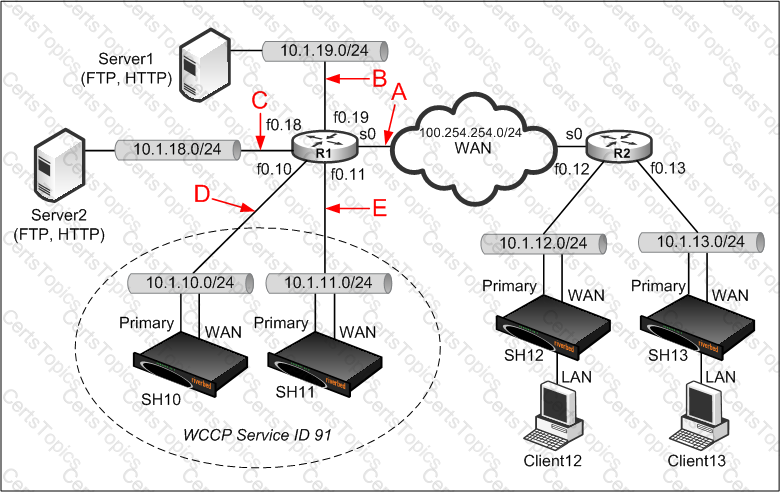
where should the WCCP redirection take place for traffic originating from the clients to the servers, assuming redirect IN is used?
VSP on the Steelhead EX supports which features of VMware virtual machines? (Select 3)
In a Steelhead deployment, the customer decides to use Full Transparency and block all incoming/outgoing TCP connections on port 7800 on their firewall. However, they are finding all TCP connections are passing through the Steelheads (even ones that should be optimized via the in-path rule set).
If Full Transparency uses the original IP addresses and TCP ports for inner connections, what is needed to fix the problem?
What is the process for dropping the connection of an individual user that is currently being optimized? As an example, consider an HTTP connection being optimized with a local address of 192.168.5.10 and remote address of 192.168.5.90. (Select 2)
In the exhibit,
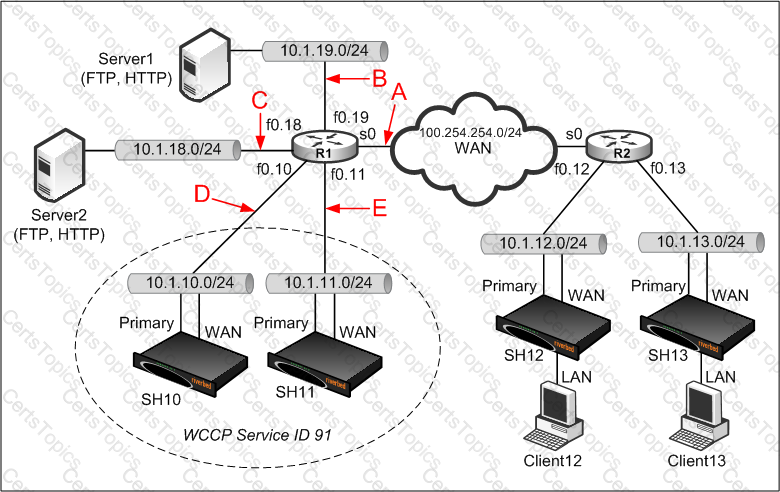
which interfaces should the WCCP router R1 listen to for multicast communication with the server-side Steelhead appliances, assuming the multicast address is 239.0.0.1? (Select 2)